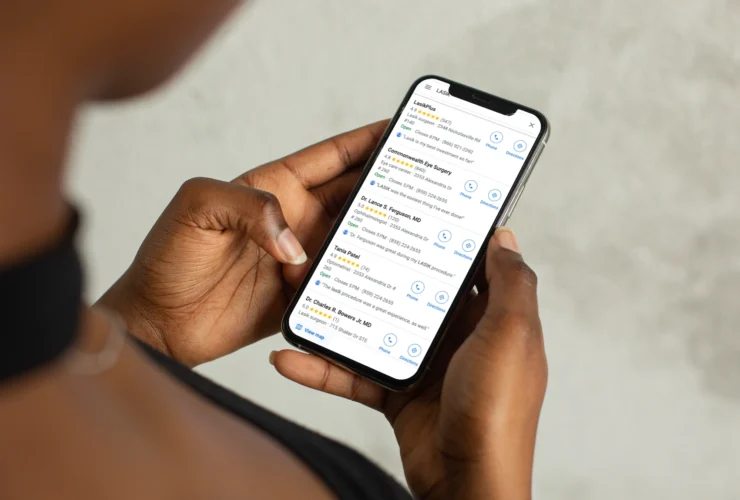Self-Serving Social Media in Healthcare – Why Doctors Should Focus on the Patient
There’s no doubt that social media is important for healthcare providers. But oftentimes, doctors get social media all wrong.
More and more doctors are turning to Instagram, Facebook, and Twitter accounts to share their thoughts on healthcare policy, patient care, or to advertise their medical services.
The problem is that many of these doctors are posting self-serving content on social media – that is, they focus on themselves rather than the patient. This doesn’t necessarily help them connect with would-be followers. And while followers on social media don’t always translate to patients, savvy doctors can still use their social media accounts in a positive way to build their brand.
How Most Doctors Use Social Media
No two physicians’ social media feeds are the same. However, many doctors use their social media accounts in predictable ways by posting the same types of content:
- Updates to business hours
- Updates on services offered at the practice
- Behind-the-scenes photos of the staff having fun
- Promotions or discounts
- Birthday shout-outs for your practice staff
None of these updates are “bad”, per se. It’s important for your followers to stay updated on changes in business hours or discounts you offer. And sharing stories and images of your company culture is great.
But is any of this actually valuable for would-be patients? Is this the content your potential followers are looking for? Probably not.
The reason why is simple: if you’re using social media this way, you’re speaking to the wrong audience.
Strategies like these may speak to current staff members, their friends, and maybe – just maybe – a few very loyal patients. But they almost certainly don’t speak to patients who looking for a doctor in the first place.
If you want to attract more patients from your social media profiles, you need to change the way you think about social media and what you post.
What Should Healthcare Providers Post Instead?
Socrates said to “Know Thyself.”
If he were around to opine on social media today, he would probably say “Know Thy Audience.”
The problem is that most doctors think about social media – specifically, their audience – in the wrong way: they focus on themselves. And if they do focus on patients, it’s likely for the benefit of current patients, not prospective ones.
Some doctors on social media don’t focus on patients at all. They focus on the medical community and their professional connections. This leads to Twitter feeds filled with medical jargon, scientific papers, and industry publications.
Again, this isn’t bad. But doctors shouldn’t fool themselves: this self-serving approach doesn’t resonate with would-be followers or would-be patients.
If doctors want to get the most out of social media as a tool for patient acquisition, they need to draw a clear line between content meant for patients and content meant for themselves.
Yes, prospective patients are looking for medical expertise and professionalism, so it’s important to showcase that from time to time.
But deep down, patients really just want to be heard. They want to be understood. They want connection and compassion from their doctor long before the doctor actually solves their medical problem.
If you want to deliver great patient experiences, you have to practice empathy long before you begin to practice medicine.
Changing the tone of your social media can foster this connection and build trust among prospective patients. It’s time that doctors stop being so self-centered online by focusing on their own interests – it provides no benefit to the patient.
Consider your audience. Consider your platform. Think twice before posting.
Do Followers Really Matter?
This brings us to a discussion of the relationship between follower counts and patient acquisition: do more followers on social media directly correlate to higher patient volumes?
The short answer? Nope.
It’s true that social media profiles appear prominently on Google, but very few patients are actually using Facebook and Twitter as tools to find their next doctor.
Organic social media won’t cause a patient to make a “purchase decision” (paid social might, but that’s a topic for a different day).
But social media can still be a very powerful tool to influence a patient’s behavior and lead them to take the next step.
The primary reason is social proof.
Social proof is one of the most immutable forces of human psychology that influences our behavior and decision-making – and social media is custom-tailored to exploit it.
Social proof means that the more people we see doing a thing, the more we want to do it, too.
When social proof is implemented correctly, it leads to self-reinforcing practice growth.
The more followers a page has, the more likely it is to attract the next follower.
The larger the audience, the faster it will grow.
So in that respect, more followers for your social media profile is a positive sign. It can help your practice growth flywheel start to spin faster and faster. More followers probably won’t directly lead to more patients at first, but as you continue to grow your audience and reputation, you’ll become the practice in town to beat.
…so while your social following may not directly result in higher patient volume right away, it certainly doesn’t hurt.
So if you want to grow faster, the best way to get there is to remember your audience and eliminate any self-serving content on your social media.
Focus on empathy. Focus on building trust. Focus on connection.
You’ll be well on your way to growing your practice and attracting more patients…if only you think twice before pressing “publish.”







![Messenger healthcare marketing | the best times to post on facebook, twitter, linkedin & other social media sites [infographic] Messenger healthcare marketing | the best times to post on facebook, twitter, linkedin & other social media sites [infographic]](https://messenger.md/wp-content/uploads/2018/03/age-740x500.jpg)
